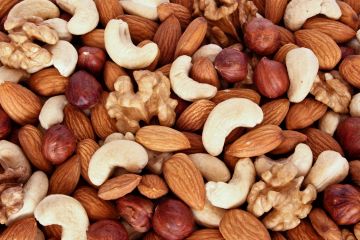There are many health-related myths in all media justifying the consumption of almost any food or drink. Let’s look at some of those myths.
- Red wine is good for your heart

There are definite pros and cons to drinking red wine. It is common knowledge that excessive alcohol consumption is associated with liver disease and for females, drinking alcohol increases risk of breast cancer. Yet, other studies have shown that the ethanol in any alcoholic beverage increases good cholesterol and reduces the incidence of blood clotting; thus reducing your risk of cardiovascular disease.
However if you think that the glass of red wine is doing your health even more favours that other beverages then you can think again. Studies indicate that to get the added benefits of the additional antioxidants found in red (over other drinks) we would need to be consuming ~180 bottles a day!
Recommendation: Stick to no more than 2 standard drinks per day with at least 2 alcohol free days each week. If you don’t drink, then don’t start and certainly don’t binge drink as this is providing more damage rather than benefit to your health.
- Dark chocolate is a rich source of antioxidants
Let’s get one thing straight, any health benefit of chocolate comes from the cocoa, so the darker the better. All the studies that look at the health benefits of chocolate have been looking at the consumption of very small amounts i.e. 1-3 small pieces per day. Studies show that chocolate may increase the health of your arteries, reduce blood pressure and improve your cholesterol ratios of good to bad. However, no matter what kind of chocolate you choose to consume; all of it is very high in kilojoules and does not contain the same array of vitamins, minerals and fibre as fruit & vegetables.
Recommendation: Don’t replace fruit & vegetables with chocolate. Instead, if you like dark chocolate, include small amounts of it in your diet as a treat every now and then. If you don’t like or don’t eat dark chocolate then there is no need to start.
- One coffee a day is okay
Evidence suggests that coffee may reduce your risk of developing some cancers, boost your liver health and play a protective effect against stroke. On the other hand coffee has also been shown to raise the level of fat in your blood and the caffeine may have an effect on those who are sensitive to it, i.e. high blood pressure, heart burn, overactive liver, heart palpitations, insomnia and anxiety.
Recommendation: If you don’t drink coffee there is no need to start. Otherwise limit your coffee intake to 1-2 per day and be mindful of the amount of caffeine that you are consuming not just in coffee but also other foods and drinks e.g. chocolate, cola products etc.
- Exercising in the morning increases your risk of suffering a heart attack or stroke
The idea is that as the body is somewhat dehydrated (having not consumed any fluids over-night) the blood is thicker and so more likely to cause a clot, leading to a heart attack or stroke. This rumour has not been confirmed!
Recommendation: The list of benefits from exercise (at any time of day) is very long. If there was a pill that could do everything that exercise could for your health, everyone would be prescribed it. The best way to get into exercise is to start slowly. Always check with your health practitioner to make sure you will be safe to start exercising.
- Carbohydrates are fattening
This is a myth that has in and out of vogue over the years. Your body needs carbohydrates. Carbohydrates are by far the best source of energy for your brain and is used as the primary source of energy for your muscles. The trick with eating carbohydrates is to make sure that you consume those that are wholegrain. The more processed (white) a carbohydrate based food is, the less nutritious and also the less filling that food will be, making it very easy to over eat.
Recommendation: Replace white bread, pasta and rice with the wholemeal, whole grain or brown varieties. Another thing to remember is to watch your portion control. Having a bowl piled high with pasta and mince sauce is not going to do as much for your health but more for your waist line as having a smaller serve of pasta & sauce and a side salad.
- [Insert name of your latest fad diet] really works
Fad diets do not work. Through whatever means they simply reduce the amount of energy that you eat compared to the energy that you burn each day. This is the basic science behind any weight loss. Often fad diets restrict certain foods groups such as dairy or carbohydrates and they certainly don’t allow your body to perform optimally.
Recommendation: Rather than constantly trying different diets, losing weight and then regaining it all (plus more) when you return to your normal eating patterns; why not make better dietary & lifestyle decisions everyday which will ensure your health is maximised, weight is manageable and you can have the occasional treat.
- Margarine is better for you than Butter
This is a topic that is often debated. Butter is natural however it is high in saturated fat which may increase the incidence of heart disease and it is also high in salt helping to increase blood pressure. Margarine is manufactured using plant based hydrogenated oil creating a similar consistency to butter.
Recommendation: Always choose butter over margarine, but use sparingly. An ideal alternative is to use spreads such as hummus, avocado, mustards or relishes instead.
- Fruit & vegetables won’t help prevent cancer
Fruit and vegetables are high in antioxidants and may or may not play a part in protecting against cancer. However, the impact that fruit & vegetable have on weight management as well as increasing daily fibre intake has a more that significant impact on the prevention of cancer.
Recommendation: Keep eating your fruit & vegetables. Ideally, at least 2 serves of fruit & 5 serves of vegetables every day.
- Dairy foods are fattening
As part of many fad diets, dairy foods are often one of the first foods groups to get the chop. Studies, however, have shown that dairy foods are actually advantageous when trying to manage weight. Dairy foods contain protein and are generally classified as having a low glycaemic index (GI) (speed at which carbohydrates are digested and released into the blood after consumption). The lower the GI, the longer that feeling of being full will last after consuming a food.
Recommendation: The combination of the protein and the low GI means that dairy foods are actually great at keeping you feeling fuller for longer, and thus can help reduce the amount of food you consume on a daily basis.
Additional note: Low-fat dairy will not have the same positive affect as regular fat dairy as it often has a higher level of sugar causing a higher GI and, therefore, not creating the same level of satiety.
- If I exercise and/or work out, I need to eat HEAPS of protein
An average adult required 0.8 grams of protein per kilogram of body weight per day. If you exercise strenuously, more protein may be consumed (up to 1.8 grams of protein per kilogram of body weight per day). The ideal level of protein for weight loss is approximately 1.05 grams of protein per kilogram of body weight per day. Note that any excess protein (or carbohydrate or fats for that matter) that you consume, will be stored as fat!
Recommendation: Rather than loading up on protein and as a consequence missing out on other vital nutrients, try eating protein rich foods such as lean red meat, poultry, fish, legumes, lentils, eggs, nuts and tofu mixed with complex carbohydrates (such as wholegrain bread, rice or pasta) and plenty of vegetables. Snack on fruit, nuts and dairy products for a nutrients rich diet that is the best source of fuel for your active body.














 Complex carbohydrates are high in fibre and starch. They also contain much-needed vitamins, minerals, and antioxidants. Great and healthy sources of complex carbohydrates are whole grains, beans, quinoa, legumes, oats, brown rice, whole wheat bread, barley, couscous, wheat bran, seeds, nuts, dry peas, oatmeal, and avocados. The key component in these complex carbs is fibre. Ideally, our daily intake of fibre should be 25 to 35 grams. High-fibre diets can help with fat loss, digestion, cholesterol levels, and the risk of disease.
Complex carbohydrates are high in fibre and starch. They also contain much-needed vitamins, minerals, and antioxidants. Great and healthy sources of complex carbohydrates are whole grains, beans, quinoa, legumes, oats, brown rice, whole wheat bread, barley, couscous, wheat bran, seeds, nuts, dry peas, oatmeal, and avocados. The key component in these complex carbs is fibre. Ideally, our daily intake of fibre should be 25 to 35 grams. High-fibre diets can help with fat loss, digestion, cholesterol levels, and the risk of disease.